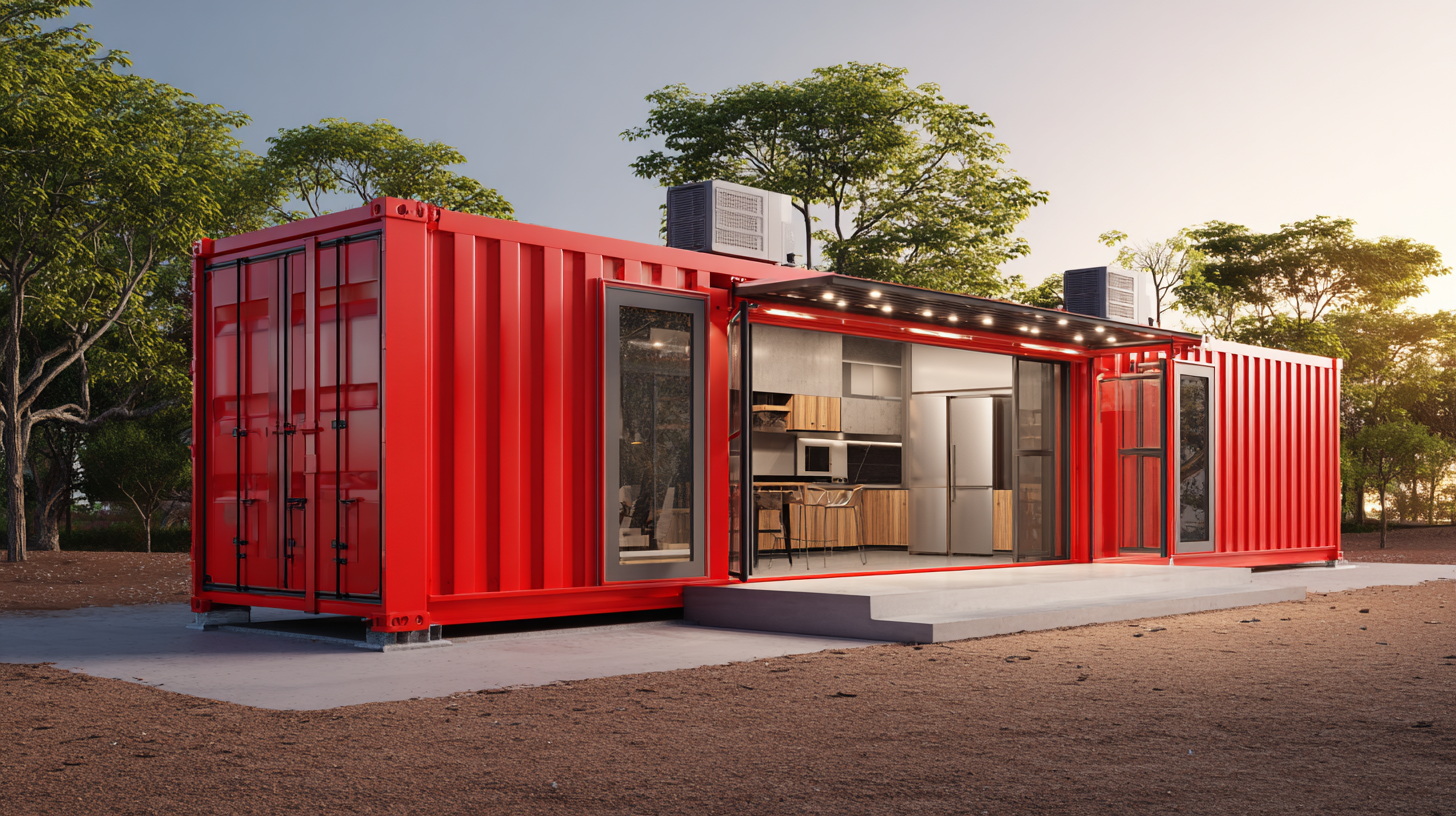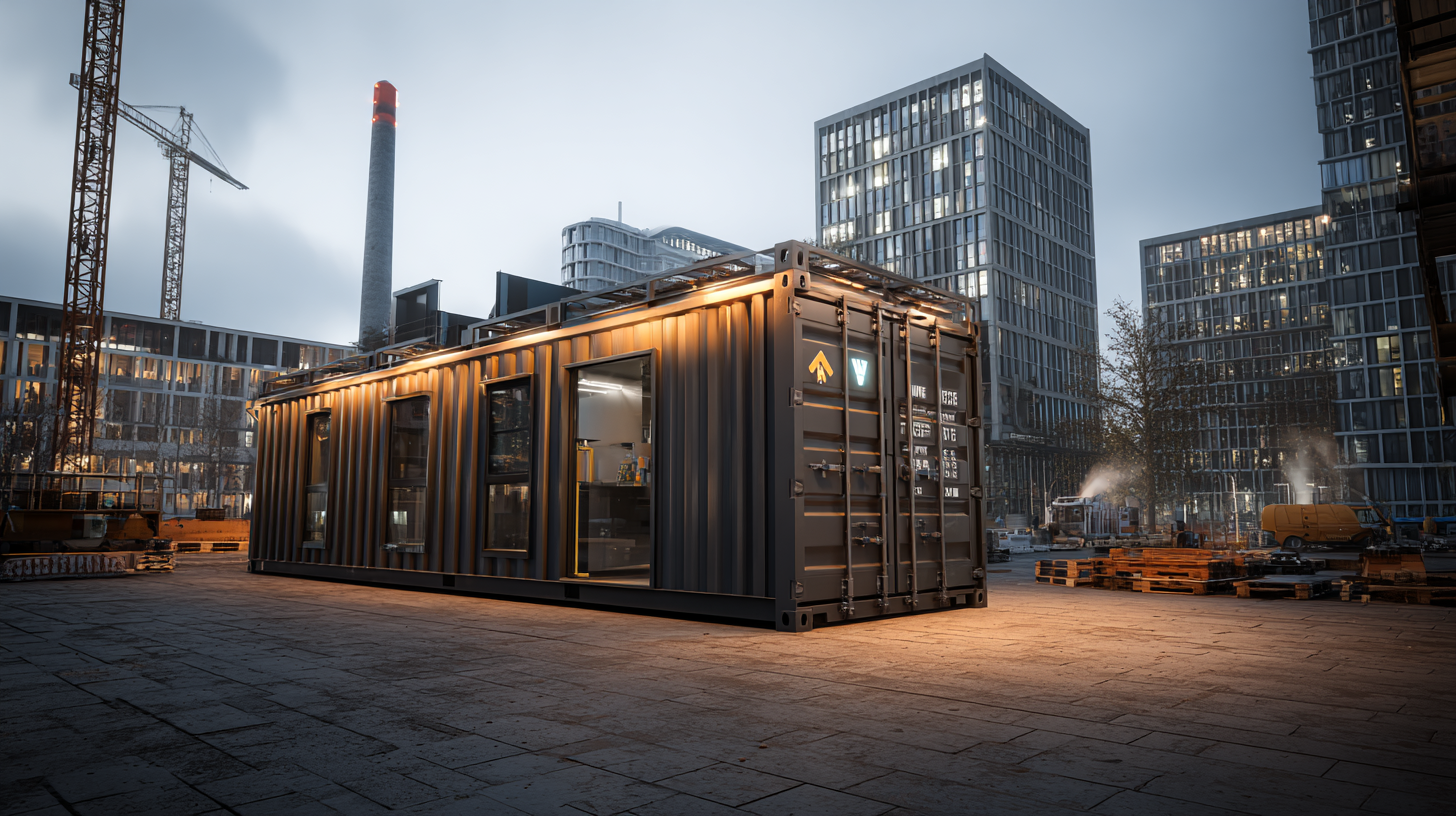The Rise of Construction Containers Revolutionizing the Building Industry Amidst Sustainability Demands
As industries across the globe face increasing pressure to adopt sustainable practices, the building sector is undergoing a transformative shift towards innovative approaches, with "construction containers" emerging as a pivotal solution. According to a report from the World Green Building Council, buildings account for approximately 39% of global carbon emissions, compelling stakeholders to seek efficient, eco-friendly alternatives.
 Construction containers, often repurposed from shipping units, offer a sustainable and flexible method of building, significantly reducing waste and construction time. Studies indicate that the use of modular construction methods can cut energy consumption by up to 50% compared to traditional methods. Moreover, the rapid growth of the global modular construction market, projected to reach $157 billion by 2026, underlines the rising acceptance of construction containers as a viable option for meeting both sustainability demands and the ever-evolving needs of urban development.
Construction containers, often repurposed from shipping units, offer a sustainable and flexible method of building, significantly reducing waste and construction time. Studies indicate that the use of modular construction methods can cut energy consumption by up to 50% compared to traditional methods. Moreover, the rapid growth of the global modular construction market, projected to reach $157 billion by 2026, underlines the rising acceptance of construction containers as a viable option for meeting both sustainability demands and the ever-evolving needs of urban development.
The Transformation of Construction Practices through Container Solutions
The transformation of construction practices through container solutions is reshaping the industry as architects and builders adapt to growing sustainability demands. By repurposing shipping containers, construction firms can significantly reduce waste and minimize their carbon footprint. These containers, originally designed for transportation, now serve as innovative building blocks for various structures, from homes to offices and pop-up shops. This shift not only lowers costs associated with traditional building materials but also allows for expedited construction timelines.
Moreover, container solutions encourage a modular approach to design, enabling builders to create adaptable spaces that can be easily modified or relocated. This flexibility is particularly appealing in rapidly evolving urban environments, where the need for sustainable and efficient use of land is paramount. The incorporation of eco-friendly features, such as solar panels and green roofs, further enhances the appeal of container-based constructions, making them more energy-efficient. Ultimately, the rise of construction containers signifies a pivotal movement toward sustainable building practices that prioritize environmental stewardship while addressing modern housing and commercial needs.

Integrating Sustainability into Building Design with Modular Containers
The integration of modular containers in building design is gaining traction as sustainability demands shape the future of construction. A report by the World Green Building Council highlights that buildings are responsible for approximately 39% of global carbon emissions, prompting a shift toward more sustainable building practices. Modular container construction not only minimizes waste but also reduces the carbon footprint associated with traditional building materials. This innovative approach is estimated to be 40% more efficient in terms of energy use compared to conventional construction methods.
Moreover, the flexibility of modular containers enables designers to create multifunctional spaces that can be adapted to various needs, contributing to sustainable urban development. According to a study by McKinsey, modular construction can lead to a 50% reduction in construction time, optimizing resources effectively. With the ability to transport and assemble units quickly, developers can address housing shortages in urban areas while adhering to green building standards. This trend underscores the importance of incorporating sustainability into building design, ultimately leading to a more environmentally responsible construction industry.
Innovative Technologies Enhancing Container Construction Efficiency
Container construction has emerged as a compelling solution in the building industry, driven by the increasing demands for sustainability. Innovative technologies are enhancing the efficiency of this approach, as highlighted in a report by the Global Modular Construction Market, which indicates that the sector is projected to grow by over 6% annually through 2025. This growth is largely attributed to advancements in modular design software and new prefabrication techniques that allow for faster, more cost-effective building processes.
One significant innovation is the integration of Building Information Modeling (BIM) technology, which streamlines project planning and reduces material waste. According to a study by McKinsey, the implementation of BIM in construction can lead to productivity improvements of 20% to 30%. Furthermore, the use of eco-friendly materials and energy-efficient systems within container construction not only aligns with sustainability goals but also reduces the carbon footprint of new builds significantly. As the industry embraces these innovative technologies, the move towards container construction is likely to redefine traditional building practices, pushing for both efficiency and environmental responsibility.
The Rise of Construction Containers in the Building Industry
This chart illustrates the increasing efficiency in container construction from 2018 to 2023, reflecting the industry's adaptation to sustainability demands. The data represents the construction efficiency improvement in percentage terms over the years.
The Economic Advantages of Utilizing Container Structures in Construction
The economic advantages of utilizing container structures in construction are increasingly recognized as the building industry faces mounting sustainability demands.
 Shipping containers, often repurposed, provide a cost-effective solution that reduces construction expenses significantly. They require less time to assemble compared to traditional building methods, which translates to lower labor costs. Furthermore, the durability of containers means that they can withstand harsh conditions, minimizing long-term maintenance expenses.
Shipping containers, often repurposed, provide a cost-effective solution that reduces construction expenses significantly. They require less time to assemble compared to traditional building methods, which translates to lower labor costs. Furthermore, the durability of containers means that they can withstand harsh conditions, minimizing long-term maintenance expenses.
Moreover, the adaptability of container structures offers numerous design possibilities, allowing developers to create multifaceted spaces without the need for extensive groundwork. This versatility is particularly beneficial in urban settings, where land is scarce and expensive. Utilizing containers can also help in achieving faster project completion times, optimizing overall budget management. As the construction industry shifts towards sustainability, the economic benefits of using container structures are likely to drive their popularity even further, making them an attractive option for modern development projects.
Future Trends: Expanding the Scope of Container Use in Urban Development
The innovative use of construction containers is reshaping urban development, especially in the context of sustainability demands. As cities worldwide face challenges arising from rapid urbanization and the need for resilient infrastructure, containers offer a versatile solution. In areas like Pasadena, where significant urban development is planned, containers can be utilized to create sustainable housing, pop-up retail spaces, and community hubs. This approach not only addresses housing shortages but also reinvests in community spaces that foster social interaction and economic revitalization.
Tips: When considering container use for urban projects, focus on maximizing space efficiency and environmental sustainability. Implement green design practices, such as vertical gardens and energy efficiency measures, to enhance the livability of container developments. Encourage community involvement in the design process to ensure the developments meet the needs of local residents and promote inclusivity.
As cities prioritize urban growth limits and sustainable practices, shipping containers stand as a promising answer to the call for smarter, greener urban ecosystems. The trend of utilizing containers for urban vertical farming further exemplifies their adaptability and efficiency in addressing food sustainability in urban landscapes. Embracing these innovative solutions positions cities to better tackle the complexities of 21st-century urbanization.
The Rise of Construction Containers Revolutionizing the Building Industry Amidst Sustainability Demands - Future Trends: Expanding the Scope of Container Use in Urban Development
| Dimension | Current Usage | Future Trends | Sustainability Impact |
|---|---|---|---|
| Residential Construction | 10% of new builds | Increased adoption to 25% by 2030 | Reduced waste and carbon footprint |
| Commercial Development | 15% of projects | Potential growth to 40% by 2035 | Utilization of recycled materials |
| Urban Housing Solutions | 5% of urban projects | Growth to 30% by 2040 | Enhanced energy efficiency |
| Emergency Shelter | 20% of rapid response projects | Increase to 50% in disaster relief | Quick deployment, minimal environmental impact |
| Retail and Pop-up Shops | 8% of retail setups | Projected increase to 20% | Promotes reuse and repurposing |



